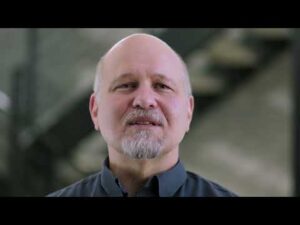The United States is facing a public health crisis that has somewhat flown under the radar among the general public. As the baby boomer generation enters retirement age, we’re seeing an increasing number of elderly people driving the demand for healthcare services. At the same time, there’s a growing shortage of healthcare professionals to address this demand due to a variety of factors, including the impending retirement of many baby boomer physicians, high levels of physician burnout and the high cost of education reducing the number of young people entering the medical profession.
A recent study by the Association of American Medical Colleges (AAMC) highlights the severity of this growing public health crisis:
- There will be a shortage of at least 37,800 physicians by 2034, and this figure may potentially be as high as 124,000 physicians
- This shortage will include between 17,800-48,000 primary care physicians and 21,000-77,100 specialists
- People over the age of 65 currently account for 34% of the physician demand, and this figure will rise to 42% by 2034
- Over 40% of physicians will be 65 or older within the next ten years, and it’s uncertain how much longer many of these doctors will choose to work at a time when demand for physicians will be skyrocketing
- The shortage of specialists will hit surgeons particularly hard, with a projected shortage of 15,800-30,200 surgeons expected by 2034
As baby boomers age, they will require more medical attention, especially for chronic conditions and age-related illnesses. By 2030, all baby boomers will be over the age of 65, and that generation will account for 20% of the population. The AAMC study discussed above found that individuals over the age of 65 visit healthcare professionals three times as often as younger adults, and they often require more complex, specialized care. This will significantly increase the need for both acute and long-term care at a time when the healthcare shortage will be at an all-time high.
In addition, this physician shortage has been devastating to rural areas, where 20% of the population is being served by under 11% of the practicing physicians in the country. Many rural communities have become medical deserts where individuals lack access to primary care physicians, pharmacies and hospitals. As the healthcare shortage gets worse, the medical deserts found in many of these rural areas are likely to result in worse healthcare outcomes than will be experienced in urban areas.
While there likely needs to be a multi-layered solution to this public health crisis, curbside consultations provide healthcare professionals with an effective tool that can significantly improve healthcare outcomes. Due to the significant benefits associated with curbside consultations, the widespread adoption of this practice can potentially be a game changer at a time when the healthcare industry is sorely in need of solutions to a problem that is only going to grow over the next decade.
What Are Curbside Consultations?
Curbside consultations are informal exchanges between primary care physicians and specialists. They provide primary care doctors with an opportunity to receive quick, expert medical advice without requiring the patient to schedule an appointment with the specialist. Curbside consultations eliminate many of the inefficiencies associated with specialist referrals, communication between healthcare providers, and lack of access to specialists among patients in many of the rural areas that have become medical deserts.
When implemented properly, curbside consultations can facilitate two-way conversations between healthcare providers that allow for rapid, informed decision making and improved provider education. Primary care doctors can receive immediate answers to specific questions while providing specialists with the contextual information they need to understand the needs of the patient being discussed. This expedites patient care, helping individuals receive the critical treatments they need in a timelier manner.
Improving Healthcare Outcomes for Patients
Curbside consultations have the ability to create better healthcare outcomes in a variety of ways, including:
- Enhanced communication and care coordination
- Faster, evidence-based decision making
- Cost and time efficiency
- Educational tool for primary care physicians
Enhanced Communication and Care Coordination
Curbside consultations facilitate immediate, individualized answers to important questions and personalized treatment recommendations while allowing for a freer, more effective exchange of information between primary care providers and specialists. According to a study led by the Mayo Clinic, 74% of primary care physicians reported that they often lacked the ability to consult on patients under specialist care and indicated curbside consultations were useful ways to address this issue.
Curbside consultations also expedite patient care by allowing healthcare professionals to quickly receive clarification on questions or obtain expert input without forcing the patient to wait for a formal referral process to be completed. This improved communication and coordination between doctors contributes to more cohesive and efficient patient care that reduces delays in treatment that can potentially have devastating consequences for the patient.
Faster, Evidence-Based Decision Making
Healthcare professionals can use curbside consultations to receive point-of-care access to expert knowledge, allowing them to rapidly implement treatments grounded in evidence-based practices. By expediting the exchange of information, these consultations can lead to more timely and appropriate interventions, which are particularly valuable in urgent or complex cases.
This fast transfer of evidence-based information extends to all healthcare professionals, not just doctors. Many nurse practitioners utilize these consultations to integrate the most up-to-date specialist information into their patient care plans. A 2020 study involving 402 nurse practitioners yielded overwhelmingly positive feedback on the benefits associated with their use of curbside consultations in their daily practice:
- 96% of nurse practitioners surveyed reported positive experiences with their curbside consultations, both with primary and specialty care professionals
- 99% of respondents felt their patients received better care when curbside consultations were successful
Cost and Time Efficiency
Curbside consultations are less time-consuming and less costly than formal patient referrals. A study we recently highlighted found that specialists typically spend approximately 8 minutes on a curbside consultation compared to 51 minutes for a formal patient referral visit, making this approach highly efficient in busy clinical environments. This efficiency can help avoid unnecessary specialist visits, reducing both patient and system costs. It also allows specialists to focus their attention on patient cases that truly require their direct involvement.
Educational Tool for Primary Care Physicians
The interactions that take place during curbside consultations provide valuable learning opportunities for primary care physicians, helping them stay up to date on the latest medical advancements, elevating their clinical decision-making. A study published in the Journal of the Medical Library Association found that:
- Advice given during curbside consultations proved to be in close alignment with the final diagnoses and treatment plans in 85% of instances
- The average time to initiate appropriate patient treatments was reduced by 40% when curbside consultations were used compared with cases where formal specialist consultations were used exclusively
- 90% of clinicians were satisfied with the outcomes of curbside consultations
This data suggests that the input received in these informal interactions can be both accurate and clinically useful. In addition to improving diagnostic accuracy, these consultations foster a more collaborative environment that supports better patient outcomes.
Technology Can Enhance the Efficiency of Curbside Consultation Processes
While curbside consultations have been used in patient care for a long time, they haven’t always delivered the value necessary to improve patient outcomes. However, recent advances in technology have transformed curbside consultations from informal, fragmented interactions into efficient, secure and accountable processes that improve provider collaboration and patient care.
Healthcare professionals have experienced the following improvements in the curbside consultation process when they’re managed by the latest and most advanced technology:
- Standardized and Structured Data Exchange – Digital platforms provide a variety of secure data sharing capabilities that ensure specialists receive all necessary clinical information they need at the onset of the consultation. This minimizes the risk of misunderstandings, reduces back-and-forth communication and improves the quality of recommendations.
- Seamless, Secure Communication – Digital technology allows for real-time messaging, asynchronous communication and HIPAA-compliant channels for providers to hold consultations. Healthcare professionals can collaborate across different organizations and electronic health records (EHRs) without costly integrations, eliminating the fragmented nature of traditional curbside consultations.
- Automated Documentation and Accountability – Digital curbside consultation platforms can automatically document interactions to create a record of the consultation and the advice given. This can minimize liability and support clinical decision making. It also holds both providers more accountable for the outcomes of the consultation.
- Improved Workflow and Specialist Availability – By streamlining and tracking consultations, digital platforms reduce administrative tasks associated with curbside consultations, allowing specialists to dedicate more time to high-acuity cases.
- Enhanced Access and Reduced Wait Times – Digital curbside consultation platforms expand access to specialist expertise, especially in rural or underserved areas where wait times for in-person visits can be very long. Patients will benefit from faster input from specialists, fewer unnecessary visits and lower costs, leading to improved healthcare outcomes.
- Better Compensation – Digital platforms can track and capture charges for curbside consultations, ensuring specialists get paid for their time and expertise (this often doesn’t occur with traditional informal consultations).
- Improved Analytics – Analytics features allow healthcare organizations to monitor the quality, response times and outcomes associated with the curbside consultations provided by their staff.
DocSide Can Elevate the Impact of Your Curbside Consultations
The demand for quick, expert guidance from healthcare specialists is continuously increasing. Due to the increasing complexity of medical care, it’s critical to leverage a digital platform that will allow you to improve the efficiency and effectiveness of your curbside consultations, while also receiving the compensation you deserve for your time and expertise. With DocSide, you’ll benefit from a digital curbside consultation platform that improves collaboration between providers and allows specialists to feel confident in the information they’re provided so that their recommendations truly improve the healthcare outcomes for the patients they’re helping.
DocSide’s exclusive eConsult Ecosystem™ delivers better outcomes for medical professionals and patients in a variety of ways. It results in:
- An improved care experience
- Enhanced patient health
- Reduced costs
- Streamlined workflows and reduced administrative complexity
- Improved access to specialty expertise among rural and underserved communities
In addition, our platform allows consulting specialists to make use of interprofessional CPT® codes that ensure they capture previously unrealized revenue associated with these informal consultations. Specialists have the ability to build more expansive networks with referring providers, increasing their ability to provide their expertise through curbside consultations. Hospitals will benefit from the reduced operational costs associated with unnecessary in-person office visits, allowing them to focus their resources on the patients who truly need in-person care.
Join the DocSide network today and contribute to a collaborative process that results in improved healthcare outcomes for patients.





